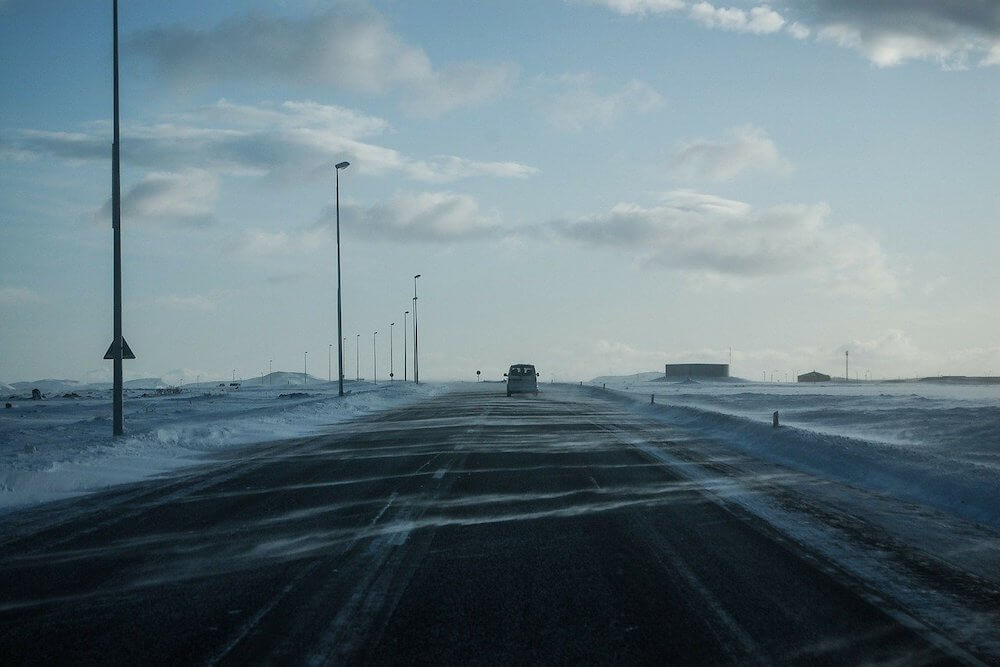What Should I Do After an Accident Occurring on Black Ice?
Winter weather might look magical in movies, but it can be lot more dangerous in real life. Any time you have to drive in snowy or icy conditions you are at risk for being involved in a serious car accident.
The steps you take after an accident occurring on black ice are important and may even have an impact on whether you are able to successfully pursue compensation for any injuries. If you have any questions or concerns about the following information, you may want to speak with a car accident attorney at Krzak Rundio Gorman, Injury Attorneys.
What Is Black Ice and How Does It Form?
Black ice is a very thin layer of ice that forms over roads. The ice itself isn’t actually black, though. Since it is so thin and forms without bubbles it becomes transparent, effectively blending in with road surfaces which tend to be black. It can be very difficult for drivers to spot black ice from behind the wheel.
There are a few ways in which black ice might form:
- Black ice may form when it rains, and then the temperature drops to below freezing before paved surfaces have a chance to dry.
- Moisture from the air that condenses into fog or dew can turn into black ice during freezing temperatures.
- If it snows and then the temperature rises above freezing, snow on the ground may melt onto roadways and freeze when the temperature drops again.
Icy roads are often associated with snow, but as you can see snow is just one of several ways in which black ice can form. Do not be lulled into a false sense of safety just because there is no snow.
Where and When Do You Risk Sliding on Black Ice?
Black ice can form anywhere on the road so long as the right conditions are present. However, you are more likely to encounter it in the early morning, at night, or when the temperature is at its lowest.
You should also be cautious when traveling in any of these areas as black ice may form here first:
- Bridges
- Overpasses
- Roads underneath overpasses
- Areas shaded from the sun
Minimizing the Risk of a Black Ice Accident
Since black ice is so difficult to spot, you should pay attention to other factors that might indicate its presence. For example, if a car ahead of you suddenly swerves for what appears to be no reason, it could be because of black ice.
If you are driving during the day, you might be able to identify black ice based on the appearance of the road. When most of the road appears to have a dull, matte finish expect for a patch that appears glossy or shiny, you might be looking at black ice. This approach is a little tricky and also requires the right kind of lighting, so do not rely on it as the only method for identifying black ice.
If you do encounter black ice, stay calm. Panicking will not help the situation and may actively make things worse. The following actions can help you drive over black ice with minimal issues:
- Decelerate by lifting your foot off the gas.
- Avoid hitting the brakes.
- Keep going straight and do not turn the steering wheel.
- If your car starts to drift left or right, gently turn the steering wheel in the same direction.
- Do not steer in the opposite direction.
Your main goal is to avoid skidding or sliding out of control. If you apply the brake, steer in the opposite direction, or jerk the steering wheel suddenly you will drastically increase your chances of losing control of your vehicle.
If you do slide off the road, the United States Department of Agriculture suggests trying to minimize damage by steering toward things like empty fields, fluffy snowbanks, or open yards. Although you probably will not have too much control over the situation, it may still prove helpful.
Consider creating an emergency bag for your vehicle if you live in an area that’s prone to things like black ice and winter weather. The National Weather Service suggests creating a Winter Storm Survival Kit that includes things like blankets, mobile charging devices, non-perishable food, first-aid kits, extra clothes, and more.
What to Do After an Accident Caused by Black Ice
Unfortunately, even if you do everything right you may still end up in a black ice accident. If this happens to you, here’s what you should do:
- Check on everyone involved and call 911 if anyone needs immediate medical attention. Remember, lives are more important than accessing vehicles for damage.
- Call the police if there is any type of serious property damage, injuries, or fatalities.
- Exchange contact information with the other driver, including names, phone numbers, license plate numbers, drivers’ license numbers, and insurance information. If possible, get contact information for passengers and eyewitnesses, too.
- Take photos of the accident scene as well as any damages to your vehicle.
- Contact your insurance company to notify them of the accident.
- Track your doctor visits, specialist appointments, and medical bills. Also start a record of how your accident injuries are impacting your daily life, including missing out on your regular activities or missed days of work.
- Get your own independent estimates for repairs if you aren’t happy with the damage valuation provided by your insurance company.
- Be careful who you discuss the accident with. Try and keep these conversations between you, the insurance company, the police, and your car accident attorney if you have one.
The period of time following a car crash can be confusing and overwhelming. If you were injured in an accident caused by black ice, having the right legal guidance could make all the difference. At Krzak Rundio Gorman, Injury Attorneys, an experienced car accident lawyer can support you through the process of filing an injury claim. You can learn more about how we can help during a free consultation.











